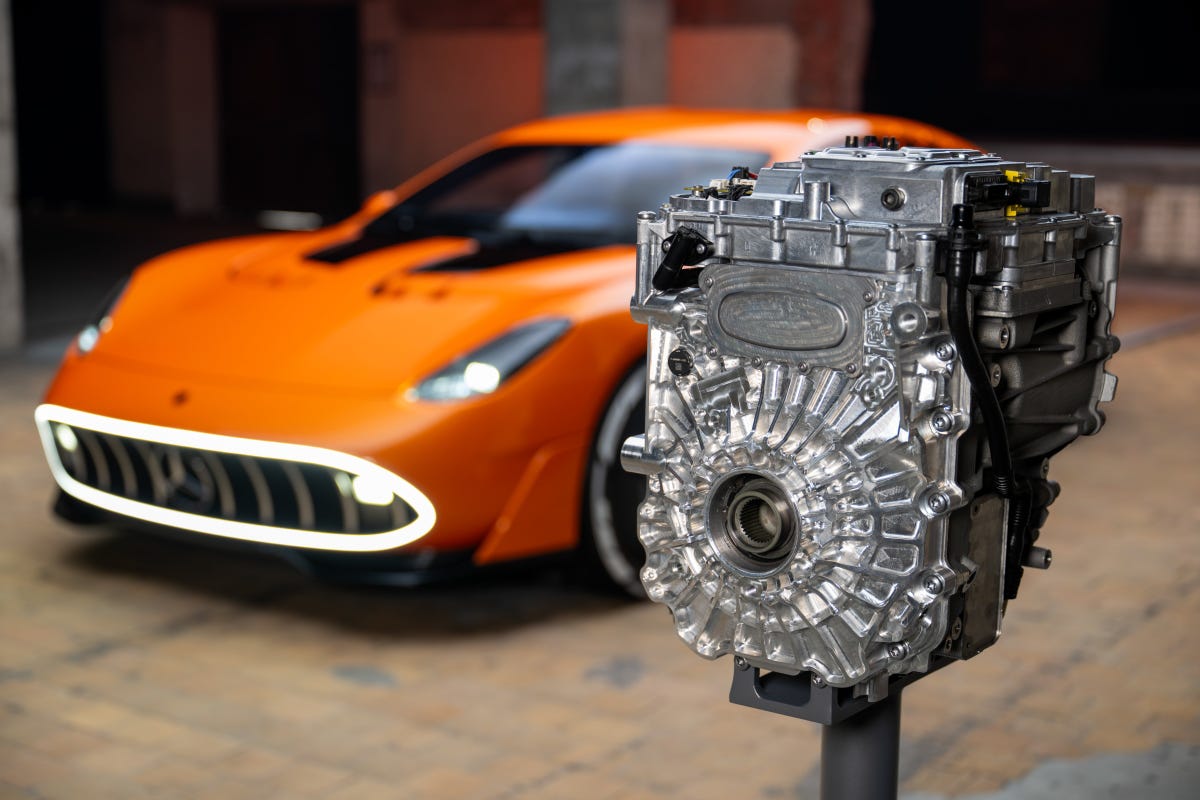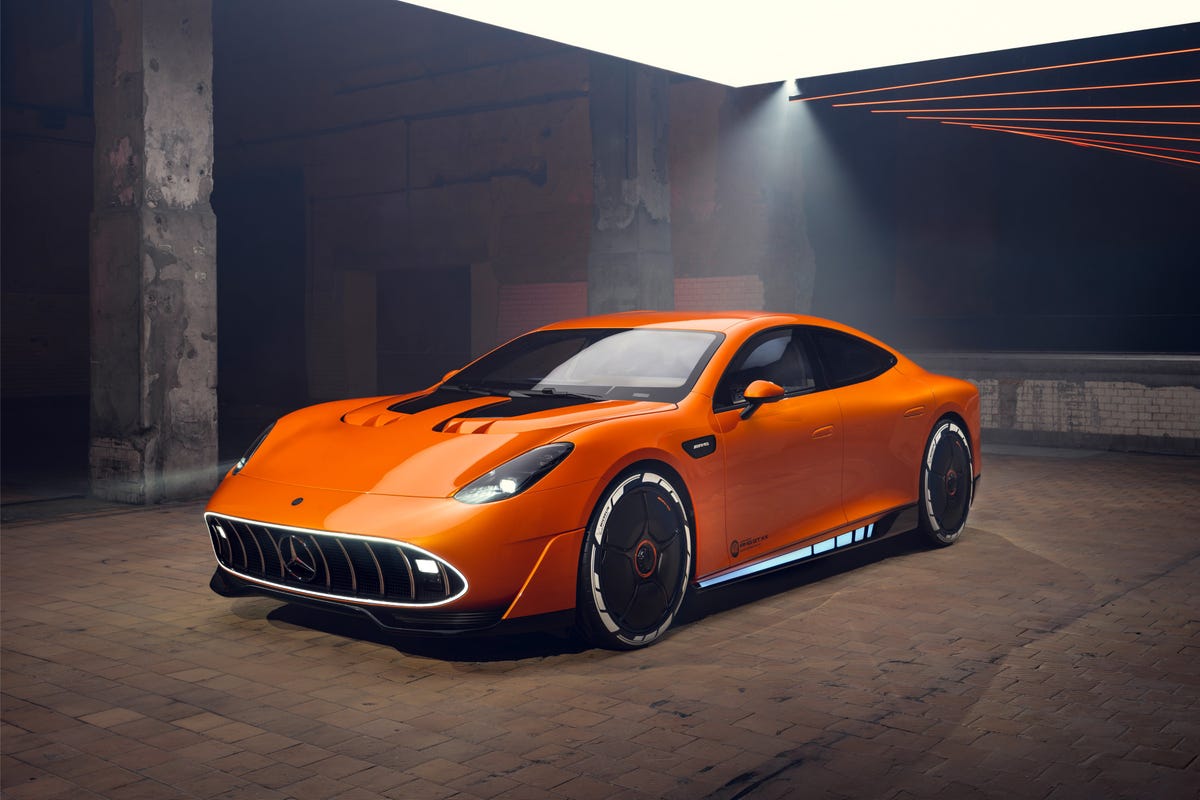AMG Chief Reveals 'Game-Changing' Axial Flux Motors Set for Widespread Rollout in Upcoming Models
Mercedes is betting big on axial flux electric motors for its future electric AMG performance vehicles — but don’t expect the tech to be limited to low-production products from Affalterbach.
First, a little background. Current Mercedes-Benz EVs use the same radial flux electric motor design other EVs do; it’s been the standard design for an electric motor for a long time. For the curious , "radial flux" means the electromagnetic flux runs perpendicular to the motor’s axis of rotation. Meanwhile, in axial flux motors, the electromagnetic flux runs parallel to the motor’s axis of rotation. There’s nothing new about the concept of axial flux motors, but recent innovations in magnets have enabled them to go from concept to reality for electric vehicles.

What are the practical advantages? Mercedes says that, compared to its radial flux motors, the axial flux motors in the AMG GT XX Concept have three times the power density, are two-thirds lighter, and take up just one-third of the space. (Smaller, lighter and more power-dense are all huge positives when it comes to EVs, obviously.) The numbers are compelling, as the three-motor AMG GT XX Concept produces “greater than” 1341 horsepower from its trio of axial flux propulsion units.
Axial flux motors from YASA (a company now owned by Mercedes-Benz) can be found in hybrid applications like the Ferrari 296 and SF90 and the Lamborghini Reveulto . Supercar makers like the design for all of the aforementioned reasons, but Mercedes-AMG plans to be the first to use them on a fully-electric production car. The production version of the AMG GT XX Concept is planned to use axial flux motors, but Road & Track asked AMG boss Michael Schiebe where he sees the tech going from here.
“We are deeply convinced of the advantages of the axial flux motor,” Schiebe says. “So, probably, you will see that technology in more cars.”
These motors will find their way into use in the performance-focused AMG.EA electric platform first, but just as engine technology from other flagship AMG performance vehicles trickles down, Mercedes intends to copy that strategy with its electric motor tech. That’s exactly as we predicted a couple of years ago in a deep dive guide into the different types of electric motors .
So, could super-power-dense axial flux motors find their way into smaller, cheaper Mercedes models? Absolutely.

“We have invested a lot of knowledge, time, resources — also financial resources — to develop that technology,” Schiebe said about axial flux motors. “And in the history of AMG ... let's put it this way. We have developed a V8, and we have rolled it out over our different car lines, and we were very successful with that. Sometimes the engine was even a little bit too big for some of our cars. But that was also the thing which made it really exciting, yeah? Because having a V8 in the C-Class with the W204 , it was a crazy thing, and the people just loved it. So I would say you can never have enough power in a car.”
Mercedes suggests the biggest barriers for its expansion of axial flux motor technology are cost and production. The company developed “around 100” new production processes (35 of which are claimed to be world-firsts) to make mass production of axial flux motors possible, but YASA CEO Jörg Miska suggests the cost to produce them will go down in time. The price to bring it to market might be high, but once you get past those growing pains, it’s all about material expenses. Of course, expanding this motor tech to more models than just high-dollar, electric performance cars will help relieve cost constraints, too — and that appears to be just the path Mercedes is taking.
Looking to purchase a car? Find your match on the MSN Autos Marketplace
Post a Comment for "AMG Chief Reveals 'Game-Changing' Axial Flux Motors Set for Widespread Rollout in Upcoming Models"
Post a Comment